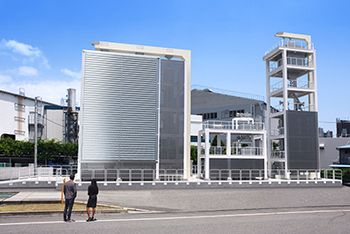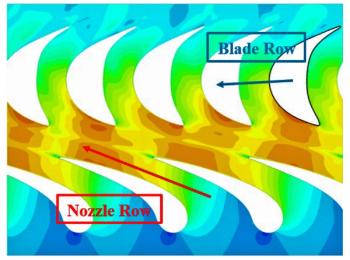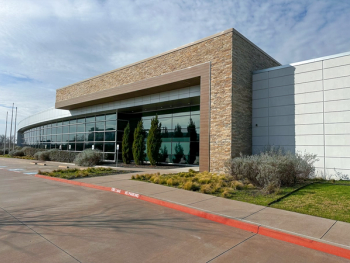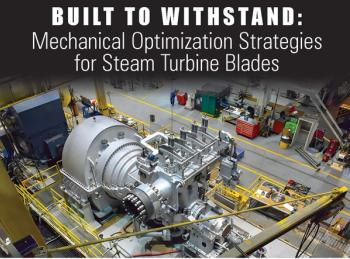
- November/December 2025
- Volume 66
- Issue 7
Revolutionizing Gas Turbine Bucket Repair: The Role of Automated Laser Welding Technology
Key Takeaways
- Gas turbine blades and buckets undergo predictable wear, necessitating maintenance to prevent reduced power output and efficiency.
- Repairing turbine buckets is challenging, requiring skilled welders for demanding tasks like tip welding.
The precision and efficiency of laser-based welding systems can address key industry challenges, such as labor shortages, operational downtime, and quality consistency.
Gas turbines are the heart of modern power generation, and like tires on a car, their rotating parts—the blades and buckets—undergo predictable wear over thousands of operating hours. While major failures are rare, the cumulative effect of heat, pressure, and high-velocity gas flow leads to gradual erosion and damage, particularly at the tips of the turbine buckets and their shrouds. If left unaddressed, this wear could cause a significant reduction in power output and a decline in fuel efficiency. Typically, the need for maintenance and repair arises between 25,000 - 50,000 hours of operation, making bucket overhauls a routine but critical aspect of gas turbine lifecycle management.
UNDERSTANDING BLADES AND BUCKETS
Before delving further, it is helpful to understand key terminology. The rotating airfoils in the gas turbine’s compressor section are commonly known as “blades.” In the expansion, or turbine section, these airfoils are referred to as “buckets,” though the term “blade” is sometimes used interchangeably. There is an important distinction: Compressor blades, being relatively less costly, are often replaced entirely when they reach the end of their service life. Turbine buckets, however, are expensive, highly engineered components with long lead times for replacement. It makes solid economic sense to repair buckets experiencing normal wear and tear, rather than replacing them. As a result, bucket repair and refurbishment has become a well-established practice, often handled by OEMs and a network of qualified independent repair shops worldwide.
THE CHALLENGE OF TIP AND SHROUD RAIL WELDING
Of all repair procedures, tip welding on turbine buckets is among the most demanding. This operation requires not only technical expertise, but also a deep understanding of metallurgy and heat transfer. The stakes are high, as a single misstep can compromise a bucket worth tens of thousands of dollars. Consequently, only the most experienced welders—artists as much as craftspeople—are entrusted with this work. These top-tier welders are in short supply, and competition to recruit and retain them is fierce across the industry.
Traditionally, these highly skilled welders spend countless hours performing painstaking, repetitive tip welding on hundreds of buckets, an approach that is both time-consuming and an inefficient use of their talents. This bottleneck in skilled labor has become a limiting factor in repair shop throughput and overall turbine fleet availability.
LASER-BASED WELDING: A TECHNOLOGICAL LEAP FORWARD
Advances in laser-based welding technology are transforming the landscape of turbine bucket repair. Unlike conventional manual or tungsten inert gas (TIG) welding, laser welding delivers precise, controlled heat input using a high degree of automation, elevating both the quality and consistency of welds while significantly reducing manual labor.
A primary example in this field is the Lasermeister series of laser processing machines developed by Nikon Corp. Notably, the repair workflow leverages two seamlessly integrated systems: the SB100 3D scanner and the LM300A additive manufacturing system. This combination exemplifies the technological progress now available to repair shops and OEMs alike.
WORKFLOW EFFICIENCY: PARALLEL PROCESSING AND AUTOMATION
A key benefit of the Lasermeister solution is its ability to streamline the bucket repair process through the integration of scanning, data processing, and automated welding. The workflow begins by mounting multiple worn turbine buckets onto a custom-designed jig, which ensures the precise positioning of each part throughout the process.
Once the buckets are securely fixed in the jig, the entire assembly is placed into the SB100 3D scanner. The SB100 performs high-precision, non-contact scanning of all buckets simultaneously, capturing detailed geometry and identifying areas of wear or damage. This digital measurement data forms the basis of an accurate and targeted repair strategy.
Following scanning, the jig, attached buckets, and scan data are transferred directly to the LM300A laser processing machine. Guided by the digital model, the LM300A executes automated additive repair, precisely depositing material only where it is needed to restore each bucket’s original profile.
This seamless workflow—from jig setup and simultaneous scanning to automated laser welding—not only enables parallel processing of multiple buckets but also maximizes equipment uptime and throughput. Operators can load a set of worn buckets at the end of a work shift and return later to find the repaired parts ready for finishing and inspection, allowing skilled technicians to focus on more complex challenges.
By integrating advanced 3D scanning with automated laser welding, the Lasermeister system delivers enhanced efficiency, repeatability, and repair quality, setting a new benchmark in gas turbine bucket maintenance. For the Lasermeister SB100 and LM300A, up to five laser processing systems can be efficiently served by a single scanner. Multiple buckets are mounted in a custom jig, which precisely positions each part for the automated process.
THERMAL CONTROL: MINIMIZING HEAT-AFFECTED ZONES
One of the key advantages of laser welding is its remarkably low and localized heat input compared to traditional TIG welding. The laser’s focused energy melts the precise area required for repair, greatly reducing the size of the heat-affected zone. This is particularly important for high-alloy turbine buckets, which are sensitive to heat-induced micro-structural changes.
The benefits are clear:
- Reduced risk of post-weld cracking: Lower heat input means less residual stress, resulting in fewer cracks after post-weld heat treatment.
- Minimal surface clean-up: The precision of the laser weld leads to cleaner weld beads and less need for post-weld grinding or finishing.
- Consistent metallurgical quality: The process is highly repeatable, reducing the risk of human error and ensuring uniformity across batches.
SHORTENING THE REPAIR CYCLE
Time is of the essence in turbine maintenance. Every hour of downtime can mean lost revenue and increased operational costs. Laser-based welding systems offer a compelling reduction in repair cycle times. Unlike manual repair, which requires continuous attention from skilled welders, laser systems can operate autonomously for extended periods. This allows repair shops to maintain a high throughput even when experienced welders are in short supply.
Moreover, the ability to perform in-house repairs independent of long OEM lead times for replacement parts gives operators greater flexibility in scheduling and minimizes unscheduled downtime. In other words, by introducing semi-automated systems that utilize laser technology, companies can reduce mistakes and inefficiencies that often occur with manual work, allowing repairs to be carried out more efficiently. In fact, some companies have already started to implement these systems.
INTEGRATION AND INSTALLATION: A PRACTICAL PERSPECTIVE
The implementation of laser welding systems is straightforward, with modular designs that can be tailored to the specific needs of each repair facility. Depending on the operational scale and layout, a shop can start with a single unit or scale up to multiple systems to match its repair volume. System installation and qualification is typically completed within a few weeks, and training for operators is streamlined by intuitive user interfaces and built-in process monitoring.
ECONOMIC AND ENVIRONMENTAL BENEFITS
The business case for laser-based bucket repair is compelling. By extending the life of expensive turbine components, turbine operators achieve significant cost savings. The reduction in manual labor and rework further improves margins, while the enhanced quality and consistency of laser welds translate to longer intervals between overhauls. There are environmental benefits as well. Minimizing the need for new replacement parts reduces the carbon footprint associated with manufacturing and logistics. The laser processing machine itself is energy-efficient and generates less waste compared to traditional welding methods.
A FORWARD-LOOKING SOLUTION
Laser-based welding technology represents a paradigm shift in the repair and maintenance of gas turbine buckets. It addresses key industry challenges—labor shortages, quality consistency, and operational downtime—while delivering measurable improvements in efficiency and cost control. For repair shops and operators seeking to maximize the value of their gas turbine assets, the adoption of advanced laser welding solutions offers a path to higher productivity and reliability. As technology matures and becomes more widely adopted, it is poised to become the new standard in turbine bucket repair.
In a field where uptime and reliability are paramount, the integration of laser-based welding systems such as Nikon’s Lasermeister series offers a practical and effective way to keep gas turbines running at peak performance. By automating repetitive tasks, improving weld quality, and shortening repair cycles, these systems free up skilled technicians to focus on the most demanding challenges, while ensuring that every repaired bucket meets the highest standards.
The future of turbine maintenance is here, and it's powered by precision laser technology.
About the Author
Mark Axford is the founder of Axford Turbine Consultants and is a contributing editor for Turbomachinery International.
Articles in this issue
Newsletter
Power your knowledge with the latest in turbine technology, engineering advances, and energy solutions—subscribe to Turbomachinery International today.





